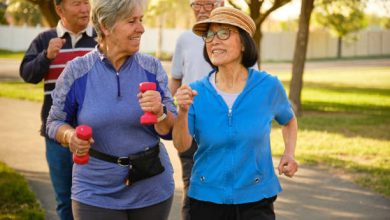Why Sitting Too Long Might Be Hurting Your Health (and What to Do About It)

In today’s digital age, many of us find ourselves sitting for extended periods whether it’s at a desk, in a car, or on the couch. Although sitting may seem harmless, prolonged periods of sedentary behavior have been increasingly linked to a wide range of health problems, from back pain to chronic diseases. Alarmingly, one of the lesser-known but important conditions that may be impacted by prolonged sitting is hydrocele, especially when lymphatic circulation is compromised. Extended sitting affects your health, what you can do to reverse its negative effects, and how natural remedies for hydrocele may provide relief.
The Sedentary Lifestyle Epidemic
A sedentary lifestyle has become one of the biggest health threats in modern society. Studies show that the average adult in developed countries spends more than 9 hours a day sitting, a figure that has only increased with remote work and digital entertainment.
Health Risks of Prolonged Sitting
Long hours of sitting have been linked to:
- Poor blood circulation, particularly in the lower body
- Obesity and metabolic syndrome
- Type 2 diabetes
- Heart disease
- Poor posture and musculoskeletal issues
- Deep vein thrombosis (DVT)
But one emerging concern is how it affects male reproductive health, including conditions like hydrocele.
What is Hydrocele?
A hydrocele is a condition characterized by the accumulation of fluid around one or both testicles, leading to swelling in the scrotum. Although it is commonly seen in newborns, it can also develop in adult men due to injury, infection, or poor lymphatic drainage—which can be worsened by extended periods of inactivity or poor circulation from sitting.
The Connection Between Sitting and Hydrocele
- Impaired Lymphatic Drainage
The lymphatic system plays a crucial role in draining excess fluid from tissues. When you sit for long hours without moving, lymphatic flow can become sluggish, particularly in the pelvic and groin areas. This can increase the risk of fluid accumulation and may contribute to hydrocele formation.
- Increased Pressure in the Groin Area
Sitting for long periods, especially with poor posture, can increase intra-abdominal and pelvic pressure, which may push fluid toward the scrotal sac, exacerbating hydrocele.
- Reduced Blood Flow
Prolonged sitting can reduce blood flow in the lower body, leading to vascular congestion. This can indirectly affect testicular health and contribute to discomfort or swelling.
Natural Remedies for Hydrocele: Prevention and Relief
If you’re dealing with hydrocele or at risk due to your sedentary lifestyle, there are several natural remedies for hydrocele that can help reduce swelling, support lymphatic health, and improve circulation. These methods also align with addressing the root cause of fluid retention caused by prolonged sitting.
- Herbal Remedies
- Punarnava (Boerhavia diffusa): This Ayurvedic herb is known for its diuretic and anti-inflammatory properties, which help reduce fluid retention.
- Guggul (Commiphora mukul): Promotes fat metabolism and improves lymphatic circulation.
- Turmeric (Curcuma longa): Contains curcumin, which is a natural anti-inflammatory and antioxidant.
- Anti-Inflammatory Diet
Consuming a diet rich in anti-inflammatory foods can assist in reducing hydrocele-related swelling:
- Leafy greens (spinach, kale)
- Fruits (berries, oranges)
- Omega-3-rich foods (flaxseeds, walnuts, salmon)
- Avoid processed foods, sugar, and alcohol
- Warm Compress
Applying a warm compress to the scrotal area may help in soothing discomfort and enhancing fluid drainage.
- Elevation
Elevating your hips while lying down for 15–20 minutes a day can assist in improving lymphatic flow and reduce swelling in the groin.
Natural Treatment for Hydrocele: Lifestyle and Exercise
Beyond herbal and dietary approaches, natural treatment for hydrocele also includes physical and lifestyle changes—many of which directly counteract the damage done by prolonged sitting.
- Break the Sitting Cycle
Set a timer to stand and stretch every 30–45 minutes. Even 5 minutes of movement can greatly improve blood and lymphatic circulation.
- Try the “Pomodoro Technique” with Movement
Use productivity tools like Pomodoro (25 minutes work, 5 minutes break) to include regular standing or walking intervals throughout your day.
- Gentle Pelvic Exercises
Engaging in pelvic floor exercises like Kegels can improve blood and lymphatic circulation in the groin area. This can be particularly beneficial for reducing hydrocele symptoms.
- Walking and Light Cardio
Regular walking just 20 to 30 minutes a day can do wonders for your lower body circulation and help prevent the fluid buildup associated with hydrocele.
- Yoga and Stretching
Certain yoga poses can be effective in improving lymph flow and reducing pelvic pressure:
- Legs-Up-the-Wall Pose (Viparita Karani)
- Bridge Pose (Setu Bandhasana)
- Cobra Pose (Bhujangasana)
These poses promote drainage from the lower body and reduce tension in the pelvic region.
The Bigger Picture: Sitting and Systemic Health Issues
While hydrocele may seem like an isolated issue, it reflects a larger pattern of systemic dysfunction caused by sedentary behavior. Other conditions that may be exacerbated include:
Varicose Veins
Prolonged sitting increases pressure in the leg veins, causing them to swell and become varicose—similarly to how hydrocele results from fluid retention.
Erectile Dysfunction (ED)
Poor blood flow and reduced pelvic health can contribute to ED. Interestingly, improving circulation through natural means can benefit both hydrocele and sexual health.
Lower Back Pain
Sitting can weaken the lower back and hip muscles, leading to chronic pain and poor posture, which in turn can affect abdominal and pelvic pressure balance.
Simple Ergonomic Fixes at Home or Work
You don’t need a complete lifestyle overhaul to fight the negative effects of sitting. Here are a few tips:
- Use a standing desk or an adjustable workstation.
- Sit on a stability ball occasionally to engage your core.
- Use a footrest to keep your legs elevated and reduce pelvic pressure.
- Ensure lumbar support for correct posture.
- Avoid crossing legs, as it restricts circulation.
When to See a Doctor
While natural remedies and lifestyle changes are helpful, it’s important to consult a doctor if:
- The swelling from hydrocele becomes painful or grows in size.
- You notice changes in testicular shape, color, or texture.
- You experience fever or signs of infection.
In some cases, hydrocele may require surgical intervention especially if it’s caused by an underlying condition like inguinal hernia or infection.
Combining Natural Remedies with Medical Advice
Using natural remedies for hydrocele doesn’t mean avoiding medical care. Instead, it’s about supporting your body’s natural healing ability while also seeking professional evaluation when needed. Whether you’re using herbal supplements, adjusting your diet, or doing light exercises, these methods can complement standard care and help prevent recurrence.
Final Thoughts: Movement is Medicine
The simple truth is that your body was made to move. Prolonged sitting may seem like a passive activity, but it actively contributes to a host of preventable health problems—including the uncomfortable condition of hydrocele. The good news is, most of the damage can be reversed or prevented with mindful habits and natural treatment for hydrocele, including exercise, posture correction, herbal support, and anti-inflammatory nutrition.
By becoming aware of the risks and taking simple, consistent actions, you can reclaim your health, improve circulation, and reduce your risk of developing or worsening hydrocele.
Related Articles:
Men’s Wellness Routines: Natural Practices to Support Vitality
The Role of Diet in Reducing Inflammation and Fluid Retention




